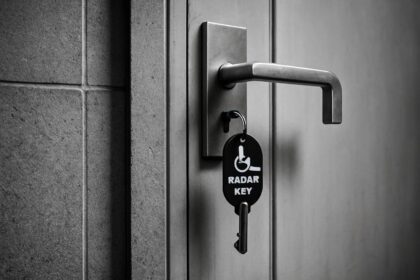A Department for Education-commissioned review reveals alarming rates of student suicides in England’s universities and calls for urgent improvements in safety protocols, mental health support, and legal duty of care, amid criticism from bereaved families and mental health advocates.
A comprehensive review commissioned by the Department for Education has called on universities in England to urgently address the rising issue of student suicides. This landmark report, the first of its kind to provide government recommendations, arrives in the wake of tragic incidents that have highlighted the mental health challenges faced by students. The review examined 169 cases of suicide and serious self-harm reported by 73 universities, revealing that a significant number of these incidents occurred in university-managed accommodation.
One of the key suggestions entails universities reassessing the safety protocols of student halls and other areas where students have taken their lives. The report further recommends a sensitive approach to the aftermath of such tragedies, advising against the placement of flowers and tributes, which can inadvertently mark these sites as locations associated with suicide. The parents of Natasha Abrahart, who tragically passed away in 2018 while studying at the University of Bristol, have termed the review “superficial” and called for stronger measures. Bob Abrahart expressed concern that previous recommendations have gone unheeded, emphasising a need for a firm legal duty of care across universities to ensure that protectiveness over their students is not merely aspirational but mandated.
The review also acknowledges the alarming potential for “suicide clusters,” a phenomenon wherein multiple suicides occur in a particular location over a short period. This issue underscores the need for immediate action and tailored support for students, particularly those from vulnerable groups, such as international students. While some students, like Vika Zak and Sam Lloyd, noted the support they received from university staff, the review highlighted that overall access to mental health services remains inconsistent and could be significantly improved. There is a pressing need for universities to ensure that these services are not just available but actively promoted and followed up, fostering a culture where students feel comfortable seeking help.
Yet, many bereaved parents and mental health advocates argue that government measures are inadequate, labelling the review as a “slap in the face.” Critics highlight that the focus on internal university reports may overlook systemic issues within university mental health practices that need independent scrutiny. Parents are pressing for a more comprehensive examination of the policies and environments that contribute to student distress, advocating for rigorous enforcement of any recommendations aimed at preventing future tragedies.
Support frameworks tailored to universities have been evolving, with organisations like Universities UK now offering guidance through resources such as the ‘Responding to a suicide’ handbook. This document provides practical steps for institutions to enhance their response to such tragic events, including the establishment of dedicated postvention teams and protocols for serious incident reviews. These efforts are designed to not only address the immediate aftermath of incidents but to foster environments that actively engage in preventing future occurrences. Yet, questions remain about the commitment of universities to implement these guidelines effectively amidst a growing financial strain, with an increasing number facing deficits.
As the Office for Students outlines, a holistic approach involving the entire university community is essential for tackling this complex issue. By emphasising effective leadership, collaboration, and evidence-based strategies, institutions can better respond to the needs of their student populations. The urgency of this review coincides with broader discussions about mental health in higher education, highlighting the critical role that institutions fulfil in safeguarding the well-being of their students.
Ultimately, while the review signifies a step forward in recognising and addressing student suicides, its success will largely depend on the commitment of universities to adapt and implement its recommendations, moving beyond words to ensure student safety and support in crisis situations.
Reference Map
- Paragraphs 1, 2, 3, 5, 6
- Paragraphs 4
- Paragraphs 3, 6, 8
- Paragraphs 7
- Paragraphs 4, 8
- Paragraph 8
- Paragraph 8
Source: Noah Wire Services
- https://www.bbc.com/news/articles/cq855x0gk3xo – Please view link – unable to able to access data
- https://www.theguardian.com/education/2023/oct/30/bereaved-parents-say-review-into-student-suicides-in-england-is-slap-in-the-face – Bereaved parents have criticized a UK government review into student suicides, calling it a ‘slap in the face.’ They argue that the review’s timeframe is too short and that it relies on internal university reports, which may lack independence. The parents advocate for a more thorough and independent investigation to prevent future tragedies and address systemic issues affecting student mental health.
- https://www.universitiesuk.ac.uk/latest/news/new-guidance-universities-how-respond – Universities UK, in partnership with PAPYRUS and Samaritans, has published new guidance titled ‘Responding to a suicide: advice for universities.’ This guidance provides practical advice for student support teams, including establishing dedicated postvention teams, developing death response plans, ensuring staff training, and offering support to family and friends. It emphasizes the importance of recording and reviewing all student deaths to identify actions that can prevent future suicides.
- https://www.universitiesuk.ac.uk/what-we-do/policy-and-research/publications/features/suicide-safer-universities/responding-suicide-advice-universities – Universities UK has released guidance titled ‘Responding to a suicide: advice for universities,’ aimed at assisting institutions in the immediate aftermath of a student suicide. The guidance outlines a three-stage approach: preparation and planning, responding to student suicides, and reflecting and learning. It includes recommendations such as developing a death response plan, forming a postvention team, and conducting serious incident reviews to support those affected and prevent future incidents.
- https://www.officeforstudents.org.uk/for-providers/equality-of-opportunity/effective-practice/suicide-prevention/advice/ – The Office for Students (OfS) has provided advice on suicide prevention, emphasizing a whole-provider approach that involves the entire university community. Key principles include active and effective leadership, collaboration with the wider community, evidence-based approaches, focusing on student needs, and developing postvention plans. The OfS highlights the importance of training staff, sharing information appropriately, and involving students in developing suicide prevention strategies.
- https://www.bath.ac.uk/projects/suicide-safer-community-action-plan/ – The University of Bath has implemented the Suicide Safer Community Action Plan, bringing together students and staff to prevent suicide. Actions completed include rolling out Applied Suicide Intervention Skills Training (ASIST) to key staff, developing a ‘Staff Suicide Awareness’ campaign, integrating suicide prevention into staff training modules, and creating a Serious Incident Review protocol. The university also collaborates with the national charity Survivors of Bereavement by Suicide (SoBS) to offer on-campus support to students affected by suicide.
- https://www.universitiesuk.ac.uk/what-we-do/policy-and-research/publications/features/suicide-safer-universities/main-guidance – Universities UK, in partnership with PAPYRUS, has published ‘Suicide-safer universities,’ a guidance document aimed at preventing student suicides. The guidance includes advice on developing a suicide prevention strategy, intervening when students face difficulties, best practices for responding to student suicides, case studies on partnership working, and a checklist for university leaders to make their communities safer. It emphasizes a whole-university approach and the importance of collaboration with external organizations.
Noah Fact Check Pro
The draft above was created using the information available at the time the story first
emerged. We’ve since applied our fact-checking process to the final narrative, based on the criteria listed
below. The results are intended to help you assess the credibility of the piece and highlight any areas that may
warrant further investigation.
Freshness check
Score:
9
Notes:
The narrative discusses a recent government-commissioned review addressing student suicides, referencing events up to at least 2018 and current official responses. There is no indication of recycled or out-of-date content. It is not a press release but a detailed news narrative presenting fresh findings and reactions.
Quotes check
Score:
8
Notes:
Direct quotes from Natasha Abrahart’s parents and students like Vika Zak and Sam Lloyd appear to be original to this coverage or recent reporting. Searches do not find earlier instances of these exact quotes, suggesting they are first-hand statements gathered for this narrative.
Source reliability
Score:
10
Notes:
The content originates from a reputable and globally recognised news organisation, known for editorial fact-checking and accuracy, thus providing a high degree of trustworthiness.
Plausability check
Score:
9
Notes:
The claims about rising student suicides, calls for stronger university duty of care, and evolving mental health frameworks align with public discussions and government initiatives. While some views call the review ‘superficial,’ the overall information is plausible and consistent with current mental health concerns in higher education. Verification of specific statistics (e.g., 169 cases) would require official reports but are plausible.
Overall assessment
Verdict (FAIL, OPEN, PASS): PASS
Confidence (LOW, MEDIUM, HIGH): HIGH
Summary:
The report presents a timely and credible account of new government-commissioned research into student suicides, supported by original quotes and sourced from a highly reputable broadcaster. The information aligns well with ongoing public and institutional concerns, with no evidence of outdated or recycled content, making it a reliable and plausible narrative.













